Freestyle swimming is an art that combines strength, agility, and technique. Enhancing your kick can unlock new levels of speed and efficiency in the water. This article delves into the nuances of the flutter kick, explores the optimal kick width, and offers drills to refine your movement. We also discuss the integration of breathing with your stroke and the mental and technical aspects that contribute to a champion’s performance. Let’s dive into the strategies that can help you enhance your freestyle swimming kick.
Key Takeaways
- The flutter kick is the heartbeat of freestyle swimming, and mastering it requires a focus on hip-driven rhythm and plantar flexion.
- An ideal kick width is unique to each swimmer and finding it is crucial for maintaining proper body position and balance in the water.
- Transitioning from drills to fluid movement is essential for speed, and incorporating vertical kicking and fins can significantly boost kick effectiveness.
- Synchronized breathing and maintaining a low head position are vital for a streamlined stroke that conserves energy and maximizes propulsion.
- Adopting a triathlete’s approach to training, emphasizing consistency and resilience, can lead to significant improvements in freestyle kick technique and overall performance.
Mastering the Flutter: The Heartbeat of Freestyle
The Hip-Driven Rhythm
The flutter kick is the propulsive heartbeat of freestyle swimming, and mastering it starts with a hip-driven rhythm. This approach emphasizes a narrow and flowing kick, which is essential for efficient propulsion and minimizing drag. A 6-beat kick pattern is often recommended, as it syncs perfectly with the body’s natural rotation from hip to hip, enhancing the swimmer’s streamline and overall speed.
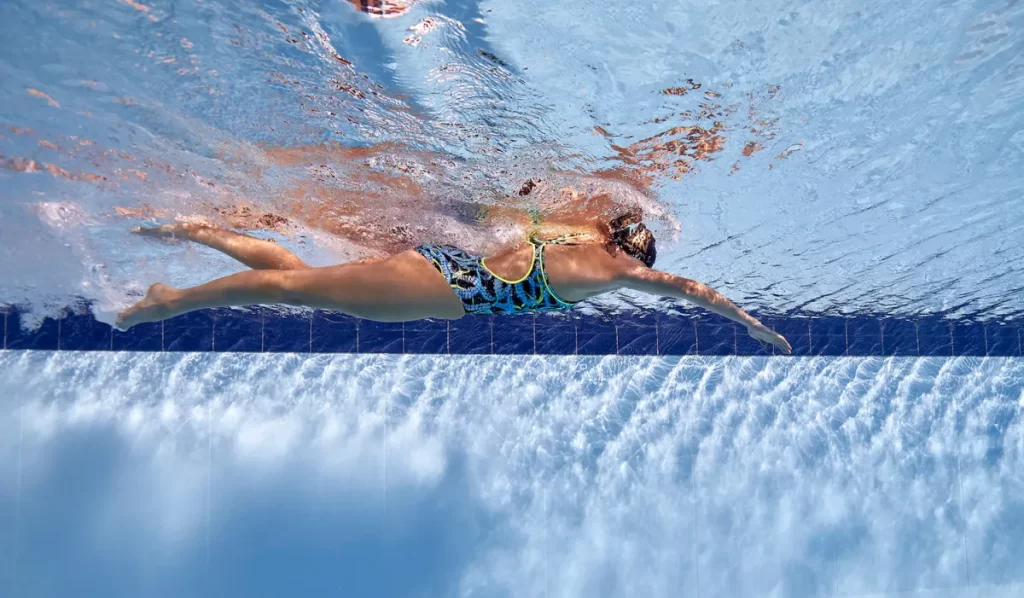
To truly harness the power of the flutter kick, focus on maintaining a constant kick with a slow turnover. This ensures that your legs are always ready to contribute to forward momentum.
Understanding the mechanics of the flutter kick is crucial. The legs should remain long with toes pointed, and the knees should have minimal bend. This technique allows for a more effective transfer of energy through the water. Remember, it’s not about the size of the kick but the quality and consistency.
Here’s a quick checklist to keep in mind during your next swim session:
- Toes pointed
- Legs long and narrow
- Minimal knee bend
- Kick through the body’s rotation
By incorporating these elements into your practice, you’ll be on your way to a more powerful and efficient freestyle kick.
Board Drills for Better Technique
Board drills are a staple in any swimmer’s toolkit, especially when it comes to freestyle for beginners. By focusing on the flutter kick with a board, you’re able to isolate the legs and really hone in on that hip-driven rhythm. Here’s a simple yet effective drill that incorporates the use of a kickboard to enhance your freestyle technique:
- Start with your arms extended, holding the kickboard out in front of you.
- Keep your head down and eyes looking at the bottom of the pool to maintain a streamlined position.
- Perform a flutter kick, focusing on keeping your kicks small and consistent.
- After every three kicks, perform a pull and take a breath, ensuring you’re not lifting your head too high out of the water.
This drill not only improves your kick but also integrates drills for breathing in freestyle, teaching you to breathe efficiently without disrupting your stroke. Remember, the goal is to create a seamless transition between kicking and breathing, which is essential for maintaining speed and endurance.
Freestyle swimming with a kickboard using a three-pull and breath technique is a great way to improve your freestyle stroke efficiency and breathing rhythm.
For those just starting out, incorporating freestyle drills for beginners into your practice sessions can make a world of difference. It’s about building a solid foundation, where each kick propels you forward with purpose, and each breath is timed to perfection.
The Importance of Plantar Flexion
Plantar flexion, or the ability to point your toes, plays a pivotal role in the efficiency of your freestyle kick. Maximizing the range of your plantar flexion can significantly reduce drag and increase propulsion. Think of your feet as extensions of your legs, acting like flippers that slice through the water.
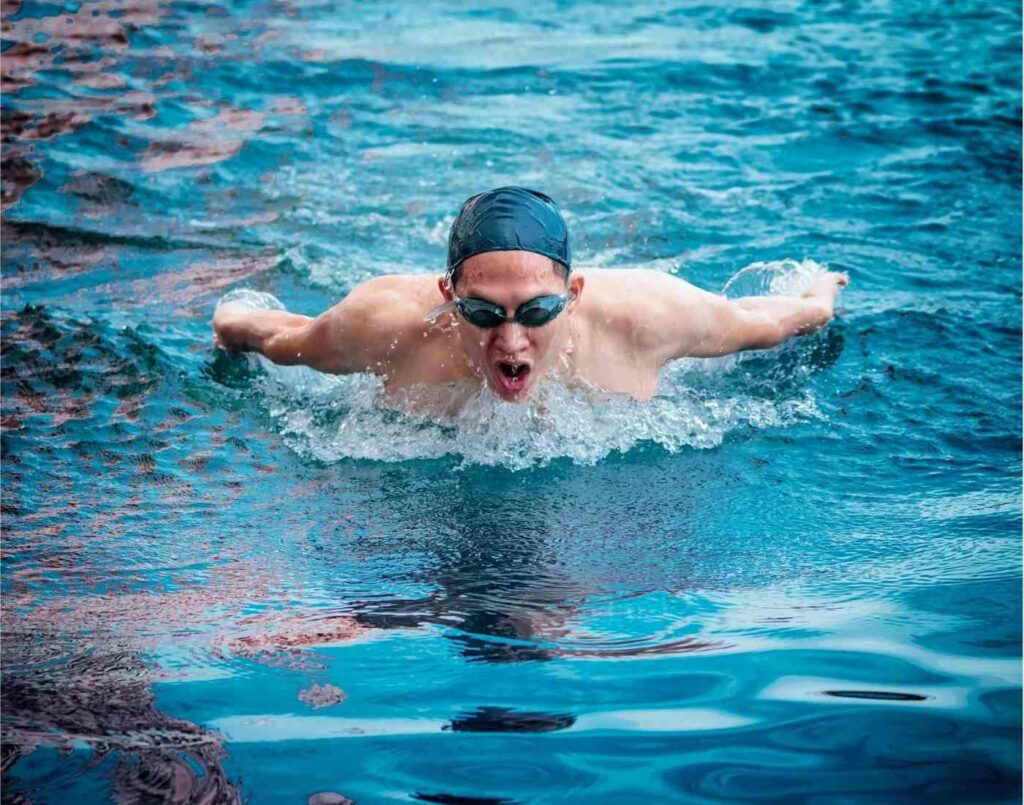
To improve your plantar flexion, consider incorporating exercises that target ankle flexibility and strength. Here’s a simple routine to get you started:
- Modified Squat: Focus on ankle mobility while performing squats.
- Slant Boards and Rolled Mats: Use these tools to enhance squatting posture and activate hip flexors.
- Sumo Squat: A wider stance can help deepen your squat without straining your back.
By consistently practicing these exercises, you’ll notice a more fluid and powerful kick, as your feet become more adept at pointing and pushing against the water.
Remember, the goal is not just flexibility but also control. The ‘ankle plantarflexion test‘ for swimmers is a great way to measure progress. Start in a supine position and plantar flex your ankles to the maximum range while keeping your knees extended. This test can help you gauge improvements over time and ensure that your training is on the right track.
The Kick Conundrum: Narrow or Wide?
Finding Your Ideal Kick Width
Discovering the perfect kick width is a game of personalization and precision. Your kick should be as narrow as possible while still maintaining power and propulsion. This balance is crucial for minimizing drag and maximizing speed. Experiment with different widths to find what feels natural and effective for you.
- Start with a kick that’s too wide and gradually narrow it until you lose power.
- Then, widen your kick just enough to regain that power without increasing drag.
The key is to maintain a constant, narrow kick that allows for quick hip rotation and streamlined movement through the water.
Remember, the ideal kick width isn’t just about comfort; it’s about optimizing your entire stroke. By refining your kick, you’re setting the stage for a more efficient and faster freestyle.
The Role of Kick in Body Position
Understanding the role of your kick in maintaining body position is crucial for efficient freestyle swimming. By keeping your hips up, you’ll face less drag as you move through the water, which translates to conserving energy. This is especially important when you’re aiming for long-distance swims or trying to improve your endurance.
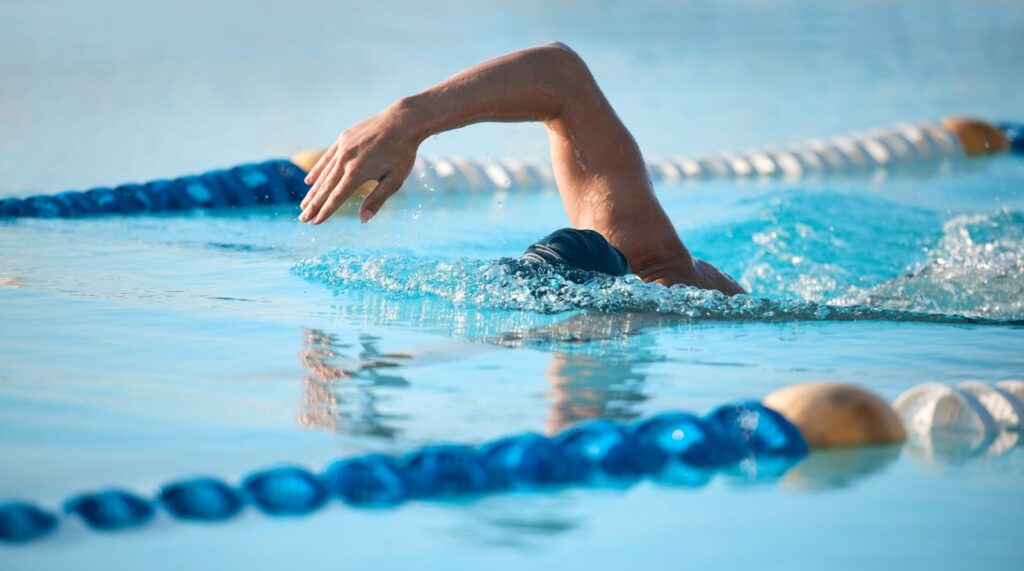
A well-executed kick helps in rotating your body from side to side, which is essential for a powerful stroke. Here’s a simple breakdown of how your kick impacts body position:
- Hips Up: Reduces drag and conserves energy.
- Side Rotation: Assists in a powerful stroke.
- Narrow Kick: Maintains a streamlined form.
A narrow and consistent kick is the foundation of a good freestyle technique. It keeps your body aligned and propels you forward with minimal resistance.
Remember, the goal is to find a balance between a kick that’s too wide, causing drag, and one that’s too narrow, which might not provide enough propulsion. Experiment with different kick widths during your practice sessions to discover what works best for your body and swimming style.
3 Strokes & 6 Kicks Drill for Balance
The 3 Strokes & 6 Kicks Drill is a cornerstone among freestyle kick drills, designed to enhance your stroke’s balance and coordination. Here’s how you can integrate this drill into your routine:
- Start by swimming three freestyle strokes.
- After the third stroke, glide and balance on your side for six kicks.
- Ensure your body remains high in the water, utilizing your hips and legs to drive the rotation.
- Repeat this sequence for a set distance, typically 25 or 50 yards/meters.
Adding fins to this drill can be particularly beneficial. They provide extra stability and surface area, helping to maintain a high body position. This adjustment allows you to focus on the mechanics of your kick and the fluidity of your rotation without the added struggle of sinking.
The goal is to create a rhythm where your kick and stroke become second nature, allowing for a more efficient and powerful freestyle.
From Splashes to Speed: Refining Your Kick
The Transition from Drills to Fluid Movement
After honing your technique with targeted drills, it’s time to seamlessly integrate those skills into your full stroke. The transition from drills to fluid freestyle swimming is like learning to dance; first, you learn the steps, then you make them your own. Start by blending drill sequences with full strokes, gradually reducing the drill portion until you’re swimming with uninterrupted rhythm.
The key is to maintain the integrity and purpose of each drill as you shift into continuous swimming. This ensures that the benefits of the drills are not lost as you increase your pace and distance.
Remember, the goal is not just to perform drills, but to embed their essence into every part of your stroke. For instance, after practicing the ‘Almost Position-11 Freestyle’, focus on the timing of your pull and breath as you transition to regular swimming. Keep your head down and aim for a low head position to maintain a streamlined form. As you progress, incorporate the ‘Combination Drill’ to reinforce a relaxed rotation and a stable horizontal bodyline.
Vertical Kicking: A Surprising Skill Booster
Vertical kicking might just be the unsung hero of freestyle swimming drills. It’s a unique way to focus on maintaining a narrow and consistent kick. By keeping your hands out of the water and your body upright, you’re forced to generate power from your hips and legs alone. This drill emphasizes the importance of a compact kick and plantar flexion, which are crucial for an efficient freestyle stroke.
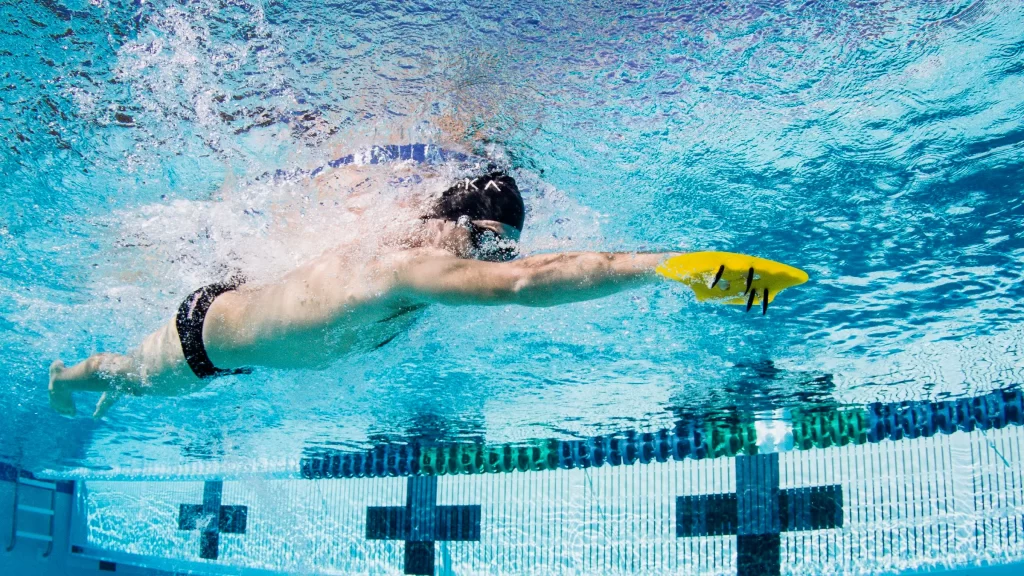
Here’s a quick rundown on how to get started with vertical kicking:
- Begin in a deep part of the pool where your feet can’t touch the bottom.
- Keep your hands above the water, either at your sides or extended overhead.
- Start with your body completely vertical and initiate the flutter kick.
- Focus on keeping your kicks small and quick, without sacrificing power.
Vertical kicking is not just about leg strength; it’s a test of balance and core stability. It teaches you to rely on your lower body to maintain position and move through the water.
Remember, the goal is to create a kick that’s both powerful and sustainable throughout your swim. Playing with the height of your kick during this drill can also help you understand the dynamics of your kick better. Whether you’re a beginner or an experienced swimmer, vertical kicking is a valuable addition to your training regimen.
Using Fins: When and Why
Swim fins are not just another accessory; they’re a powerful tool for enhancing your kick’s effectiveness. Using fins can significantly improve your body position and increase leg strength, which is crucial for a propulsive freestyle kick. They add resistance, allowing swimmers to focus on the up-kick and down-kick, ensuring both phases of the kick are equally strong.
When incorporating fins into your training, it’s important to use them strategically. Here’s a simple guide on when to use fins:
- During drill sets: Fins can help maintain proper body alignment while you’re focusing on technique.
- For building strength: The added resistance from fins can increase leg muscle endurance.
- When working on speed: Fins can help you experience a faster pace, which can be beneficial for mental conditioning.
Remember, the goal is not to become dependent on fins, but to use them as a means to enhance your natural kicking power and swimming speed.
It’s essential to choose the right type of fins for your needs. The market offers a variety of options, each designed for specific aspects of training. For instance, shorter fins are great for sprinters who need to mimic racing speeds, while longer fins can aid in building endurance and leg strength.
Breathing Life into Your Stroke
Synchronized Breathing and Kicking
Getting your breathing in sync with your kicking is like finding the rhythm in a dance. It’s all about timing and coordination. When your breath aligns with the flutter of your feet, you’re not just swimming, you’re gliding through the water with purpose. Here’s how to nail it:
- Start by focusing on your breath. Make sure you’re exhaling underwater and taking quick, sharp inhales.
- Pair each inhale with a downbeat of your kick. This helps maintain a steady flow and prevents you from holding your breath.
- Practice with drills that enforce this rhythm. For example, try the ‘3 Strokes & 6 Kicks’ drill to get the hang of it.
It’s crucial to avoid common freestyle mistakes, like not synchronizing your pull with a breath or pointing your toes down. These can throw off your entire stroke.
Remember, the goal is to create a seamless connection between your breathing and kicking. Once you’ve mastered this, you’ll feel the difference in your stroke’s efficiency and speed.
The Low Head Position: A Game Changer
Dipping your head just below the surface can transform your freestyle stroke. Achieving a streamlined position in the water minimises drag and maximises speed. This involves extending your body to its fullest, keeping your head down in the water, and aligning it with your spine. The trick is to maintain a low head position without sinking—think of it as skimming the surface with the back of your head.
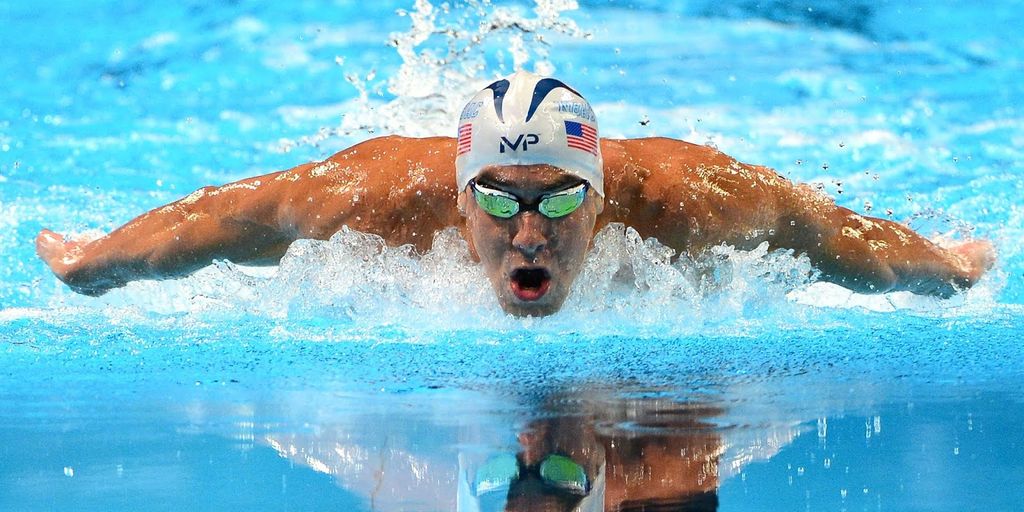
Here’s a simple way to check your head position:
- When you swim, your goggles should be barely visible if someone were to view you from behind.
- Your head should be so close to the surface that it occasionally submerges slightly with each stroke.
By keeping a low head position, you not only improve your hydrodynamics but also set the stage for a more efficient breathing technique. Instead of lifting your head, you’ll learn to rotate just enough to catch a breath with half your mouth still under water, maintaining your speed and rhythm.
Remember, the goal is not to push your head down actively but to allow it to find its natural position in the water. This subtle change can lead to significant improvements in your overall performance.
Visualizing Pro-Level Swimming
After soaking in the freestyle swimming tips for beginners, it’s time to dive deeper and visualize swimming freestyle technique for beginners at a pro level. Imagine the fluidity of Michael Phelps freestyle; it’s not just about the power of the kick in freestyle swimming, but also the rhythm and grace.
- Step 1: Watch uncut underwater footage of elite swimmers to understand their technique.
- Step 2: Analyze the symmetrical up-and-down leg movements that propel them forward.
- Step 3: Notice how they synchronize their breathing with their strokes, mastering how to breathe in freestyle swim.
- Step 4: Observe the seamless transition between strokes, a hallmark of freestyle swimming steps.
By visualizing these elements, you can begin to internalize the nuances of advanced swimming freestyle technique. This mental practice can be as crucial as the physical training itself.
Remember, the goal isn’t to mimic the greats but to understand the principles that make their swimming so effective. By breaking down the freestyle swimming steps and incorporating them into your routine, you’ll be on your way to a more efficient and faster freestyle.
The Champion’s Edge: Mindset and Technique
Embracing the Triathlete’s Approach
Triathletes often have a unique perspective on swimming, viewing it as one piece of a larger puzzle. Their approach to training can be a game-changer for any swimmer looking to enhance their kick. Triathletes tend to focus on efficiency and endurance, which translates into a kick that’s not just strong, but sustainable over long distances.
By adopting a triathlete’s mindset, swimmers can learn to value the role of the kick in conserving energy and maintaining a steady pace throughout their swim.
Incorporating triathlon training principles into your routine can lead to significant improvements. Here’s a quick rundown of what that might look like:
- Diversifying workouts with longer intervals for speed work
- Emphasizing consistent practice to refine technique
- Seeking feedback and using it to make incremental improvements
Remember, the goal isn’t to kick harder, but smarter. By training like a triathlete, you can transform your swim kick from a mere support act to a starring role in your freestyle performance.
Overcoming Setbacks with a Strong Kick
Setbacks in swimming are as common as goggles fogging up. But just like you can clear your goggles, you can clear your path to faster freestyle times. A strong kick is your ally in powering through challenges. It’s not just about kicking harder, but smarter.
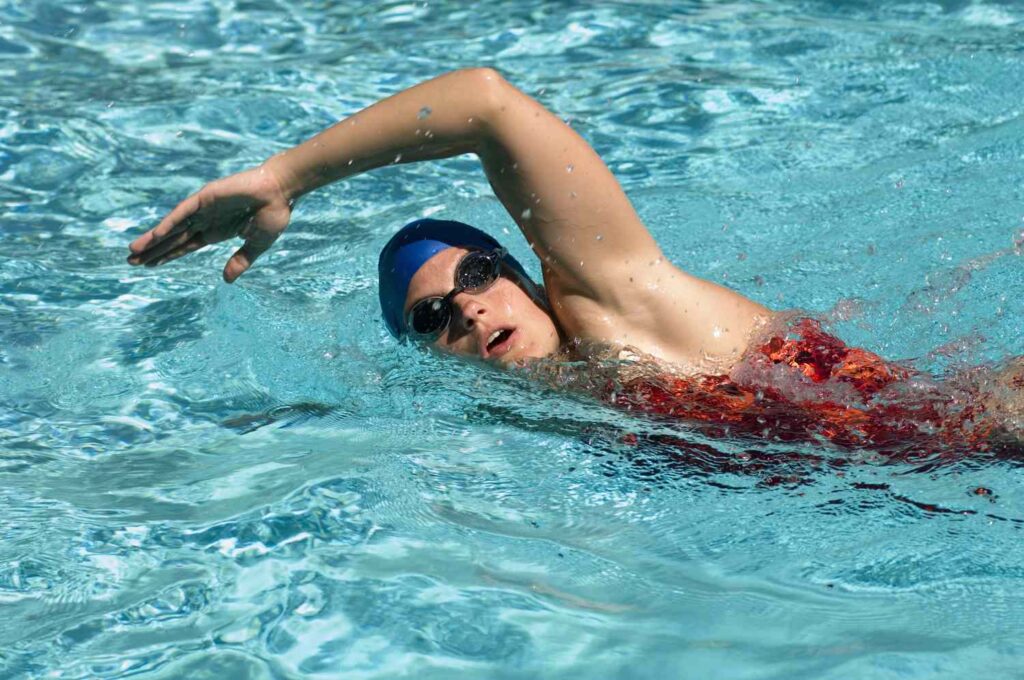
When you hit a plateau, it’s time to reassess your kick. Are you maximizing your plantar flexion? Is your kick too wide, causing drag? Or perhaps too narrow, not providing enough propulsion? Experiment with the height of your kick to find the sweet spot that works for you.
Consistency in your kick technique is crucial. It’s the rhythm that drives your stroke forward, and without it, you’re just splashing water.
Remember, it’s a process. Start with balanced kicking, then gradually integrate it into your full stroke. Use drills like vertical flutter kick to refine a narrow, consistent kick. And don’t shy away from tools like fins—they’re not just for beginners. They can help you feel the correct motion and build the necessary muscle memory.
The Magic of Consistency in Practice
Consistency isn’t just a buzzword; it’s the secret sauce that separates the good from the great. It’s about showing up, day in and day out, and putting in the work. Whether it’s nailing the perfect kick or refining your stroke, the magic happens when you commit to the grind.
The journey to swimming excellence is paved with persistent effort and a sprinkle of patience. It’s not about grand gestures, but the small, dedicated steps you take every day.
Remember, every champion was once a contender that refused to give up. By embracing a routine that includes consistent practice, you’re building muscle memory and ingraining the habits that will carry you through to victory. Here’s a simple breakdown of what consistency in practice can look like:
- Regular swim sessions, at least 4 times a week
- Focused kick drills to enhance propulsion
- Technique analysis and incremental adjustments
- Mental rehearsal and visualization exercises
And while the focus is often on physical training, don’t underestimate the power of a strong mindset. Core strength and rotation are crucial, and as Rowdy Gaines points out, leveraging your core muscles is key to driving each stroke. So, keep your head in the game and your eyes on the prize. The results will follow.
Unlock your potential in the pool with ‘The Champion’s Edge: Mindset and Technique’. Dive into our comprehensive guides on swimming techniques, nutrition, and health to elevate your performance. Whether you’re a beginner or a seasoned swimmer, our resources are tailored to help you swim bravely and thrive boundlessly. Ready to make a splash? Visit our website now for expert advice and join a community of swimming enthusiasts who are just as passionate about the sport as you are.
Conclusion
And there you have it, fellow swimmers! We’ve dived deep into the nuances of freestyle swimming and surfaced with a treasure trove of tips and drills to enhance your kick and overall technique. Remember, whether you’re using a board to perfect that flutter from the hips or incorporating fins to maintain a high body position, the key is consistency and a champion mindset. Embrace the drills, from the 3 Strokes & 6 Kicks to mastering the streamline, and visualize yourself swimming with the grace of a pro. It’s not just about the splash; it’s about the rhythm, the technique, and the style. Keep your kick narrow, your rotation on point, and your freestyle looking effortless. With determination, practice, and maybe a little bit of that Haufler magic, you’ll unlock the power of your kick and see a real difference in your stroke. So, take these insights, hit the water, and swim your way to freestyle finesse!
Read more: Breathe Right, Swim Faster: Freestyle Breathing Drills for Improved Performance
AUTHOR
Sang Nguyen
Sang Nguyen is a former national swimmer for Vietnam who has transitioned into coaching. With a passion for fostering a healthy swimming community and connecting like-minded individuals,......Read More
BLOG
Maybe You Are Interested
Good Swim Meet Snacks: What to Eat for Optimal Performance
Good nutrition is crucial for swimmers to maintain energy, recover quickly, and perform at their...
Read More...Optimizing Your Performance: The Best Diet for Swimming Training
Optimizing your performance in swimming is not just about rigorous training; it’s equally crucial to...
Read More...Achieve Peak Performance with This Diet Chart for Swimmers
Whether you’re a novice or an expert swimmer, understanding the right diet is crucial for...
Read More...Eating Like a Champion: Exploring the Diet of Michael Phelps
Michael Phelps, renowned for his Olympic triumphs, has a diet as extraordinary as his swimming...
Read More...Muscle Gain for Swimmers: Tailoring Your Diet for Strength
Swimming is a demanding sport that requires a tailored approach to nutrition to support muscle...
Read More...A Comprehensive Diet Plan To Gain Weight For Swimmers
Swimming is a demanding sport that requires meticulous attention to nutritional needs to optimize performance,...
Read More...